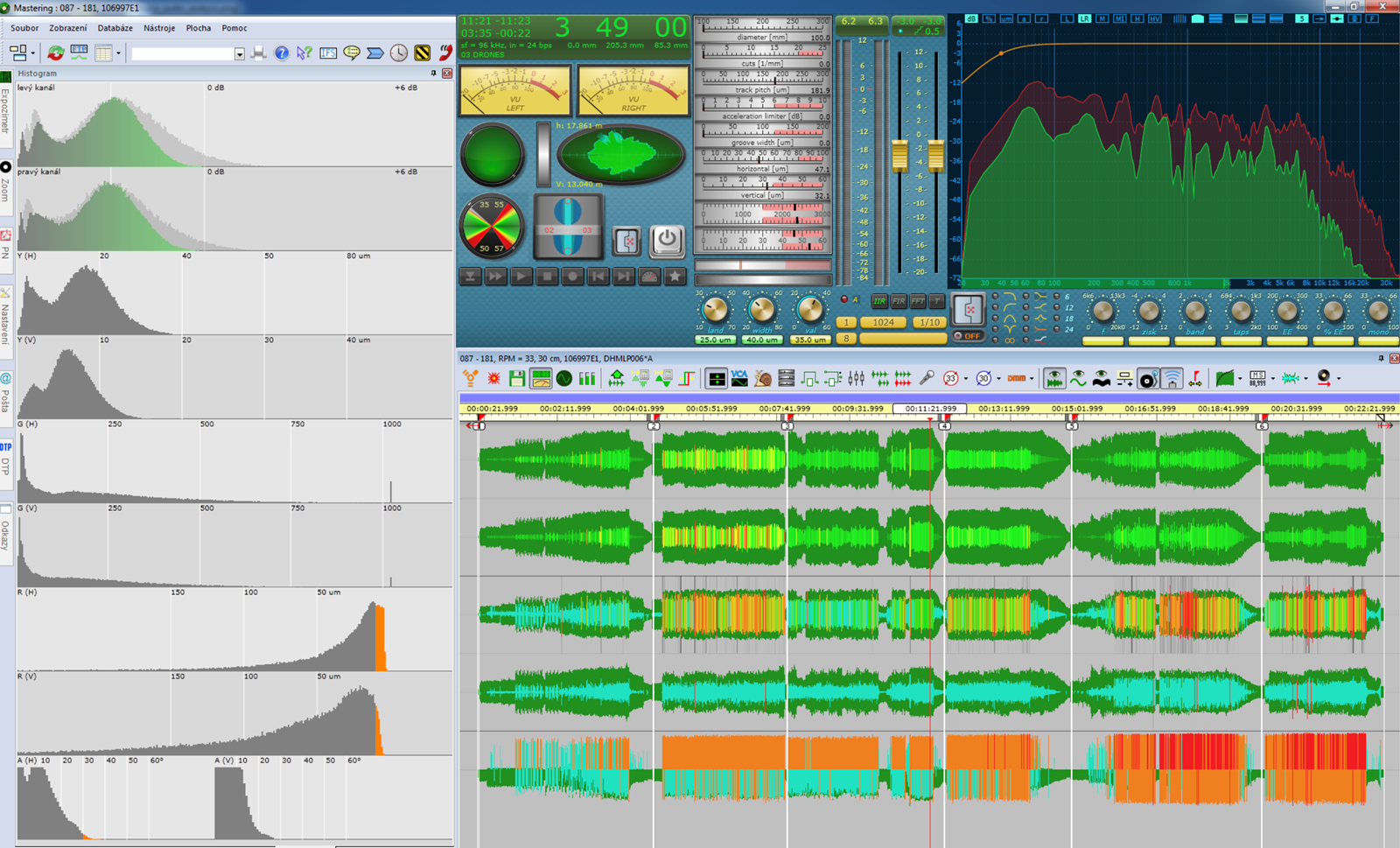
At DISC International we live and breathe vinyl. The satisfying crackle, the tactile experience, the rich, warm sound – it's why we do what we do. But bringing your music to life on vinyl isn't just about pressing plastic; it's about translating your artistic vision into a physical record. A crucial step in this journey is delivering audio masters that are perfectly prepared for the unique demands of vinyl.
Unlike digital formats, vinyl records have their own set of rules and understanding them is key to avoiding common pitfalls and achieving a truly exceptional sound. This guide will walk you through the essential considerations for prep-ing your audio masters, ensuring your music sounds its absolute best on our presses and, ultimately, on your fans' turntables.
- Embrace Vinyl's Dynamic Range and Loudness Limits
Think of vinyl as a delicate instrument. It has a finite capacity for loudness and dynamic range. Pushing the boundaries with excessive loudness can lead to undesirable distortion, frustrating skips, or even grooves that simply can't be tracked by a stylus. While digital masters often benefit from perceived high loudness, vinyl thrives on a more natural, balanced approach. Preserving a healthy dynamic range allows your music to breathe, offering a more engaging and authentic listening experience. Resist the urge for heavy limiting and let your tracks have room to expand and contract.
- Centre Your Low Frequencies
When it comes to bass, balance is paramount for vinyl. Wide stereo panning of low frequencies can cause significant tracking issues during playback. Imagine a stylus trying to navigate a wide, wobbly bass wave – it's a recipe for disaster! It's standard practice to centre your bass frequencies in the mix for vinyl. Many professional mastering engineers use an elliptical EQ, a tool that effectively collapses low frequencies to mono. This simple, yet effective technique, dramatically improves playback stability and prevents unwanted distortion, ensuring your bass remains tight and defined.
- Tame Those High Frequencies
High frequencies are particularly sensitive on vinyl. Over-accentuating frequencies above 12kHz can lead to harsh sibilance (that piercing "s" sound in vocals) or an overall brittle, distorted top end. While clarity is important, excessive brightness can be detrimental. Consider de-essing vocals if they sound too sharp, and aim for a smooth, natural high-frequency response. A well-balanced high end will translate beautifully to vinyl, offering sparkle without stress.
- Strategic Track Sequencing and Side Lengths
Planning the layout of your tracks on a vinyl record can surprisingly impact sound quality. As the stylus moves towards the inner grooves of the record, there's a slight but noticeable loss of high-frequency detail. To ensure your most impactful and sonically rich tracks shine, consider placing them towards the outer grooves of each side. Furthermore, the overall length of each side influences how loud we can cut your record without introducing distortion. Shorter sides generally allow for a louder, more robust cut, while longer sides may necessitate a slightly lower volume to maintain clarity. Plan your track-list with these considerations in mind.
- Resist the Urge for Heavy Compression
In the digital realm, heavy compression is often used to achieve a "loud" and "present" sound. However, this approach can be counterproductive for vinyl. Over-compression flattens the dynamic peaks and valleys of your music, making it sound lifeless and one-dimensional on a vinyl record. Vinyl truly shines when there's room for dynamic expression. A more natural, less compressed sound allows for greater depth, warmth, and a more engaging listening experience, truly capturing the essence of the analogue format.
- Deliver High-Quality Files
This might seem obvious, but it's worth emphasising: the quality of your source files directly impacts the final vinyl product. Always export your audio masters at the highest possible quality, ideally 24-bit with a sample rate of 44.1kHz or higher. Avoid the temptation to up-sample files that were originally recorded at a lower resolution, as this won't add any genuine quality and can sometimes introduce artifacts. Your final master should be the definitive version of your music, as close to your artistic intent as possible before it reaches our cutting engineers.
- Collaborate with a Professional Vinyl Mastering Engineer
While these tips provide a solid foundation, mastering for vinyl is a highly specialised skill. Even subtle adjustments can dramatically alter the final sound. A professional vinyl mastering engineer possesses the specific expertise and equipment to fine-tune your audio, ensuring it translates perfectly to the vinyl format. They understand the nuances of groove cutting, equalization, and the unique challenges and opportunities that vinyl presents. Collaborating with an experienced engineer is an investment that will pay dividends in the quality of your finished records.
In Summary: Your Journey to a Perfect Vinyl Pressing
Creating a great vinyl record starts with a properly prepared audio master. By understanding the physical limitations and unique characteristics of the format, embracing dynamic range, carefully managing frequencies, and delivering high-quality files, you're setting your project up for success. And remember, partnering with a professional vinyl mastering engineer is the ultimate way to ensure your music achieves its full potential on the captivating medium of vinyl. We look forward to pressing your next masterpiece!